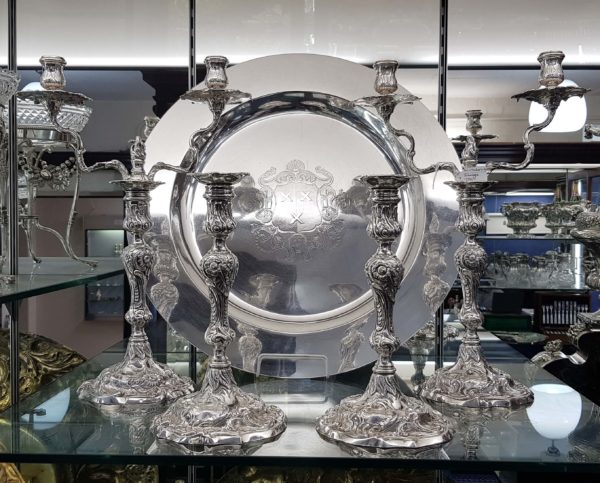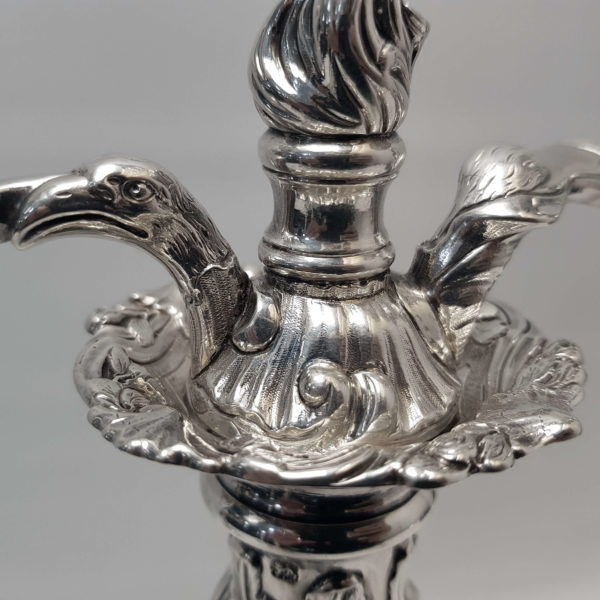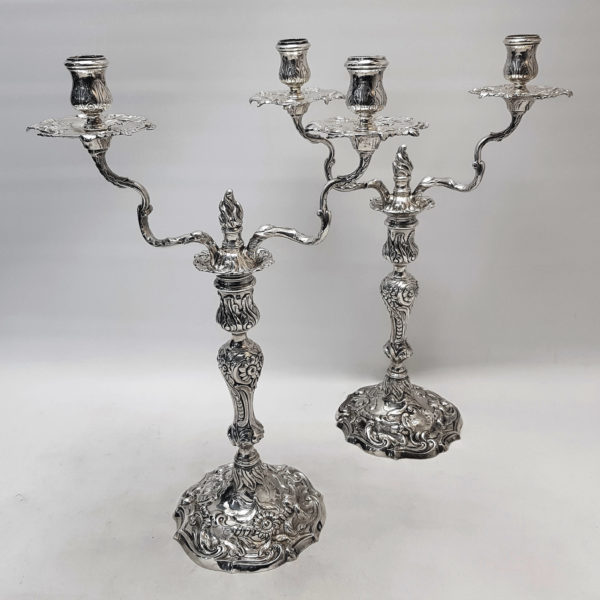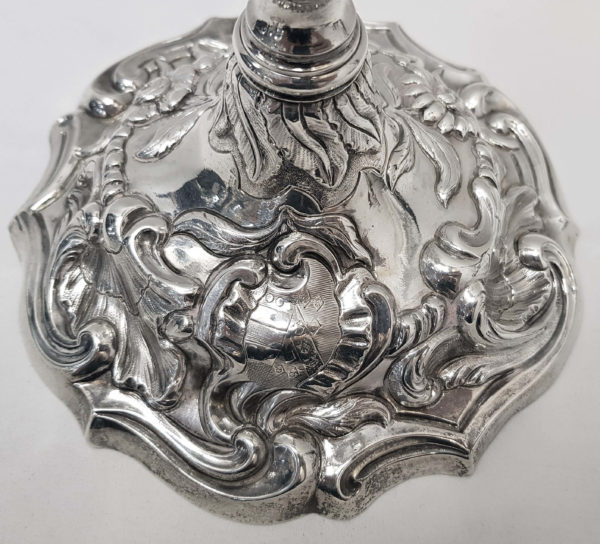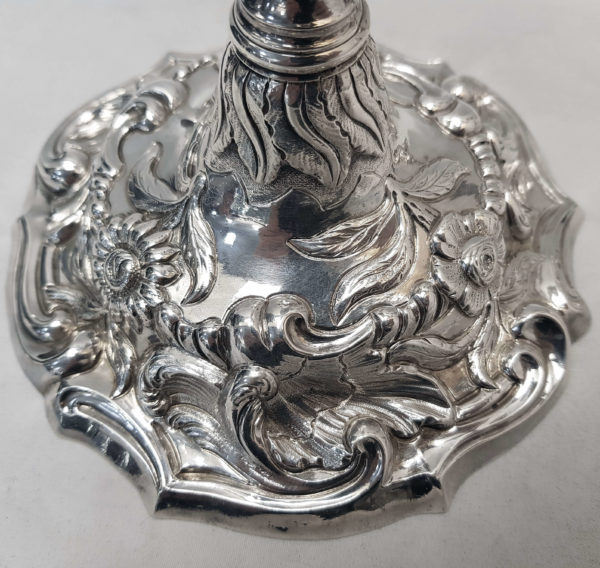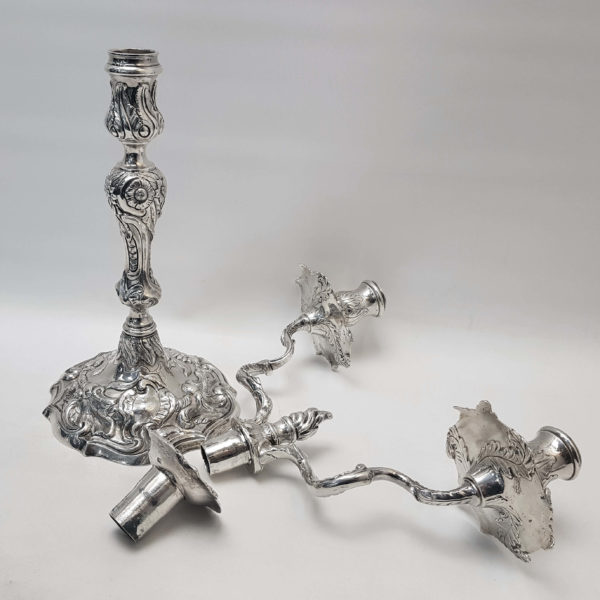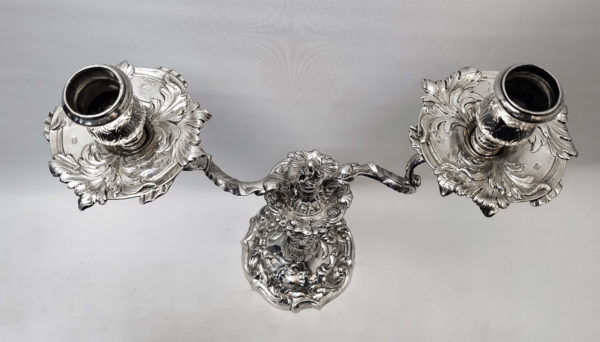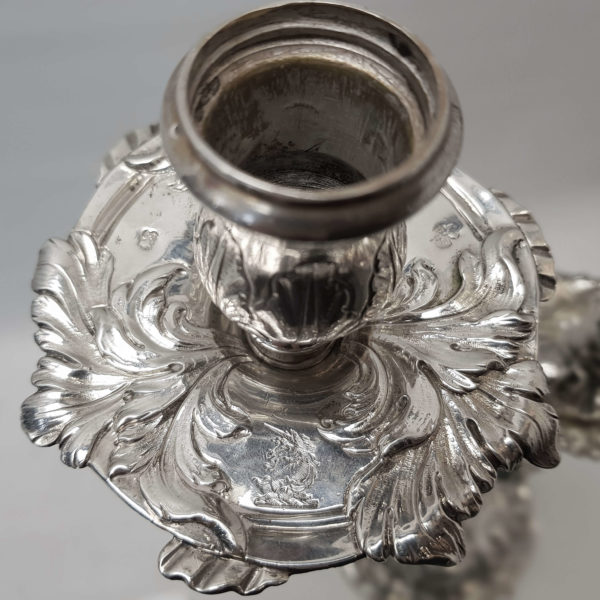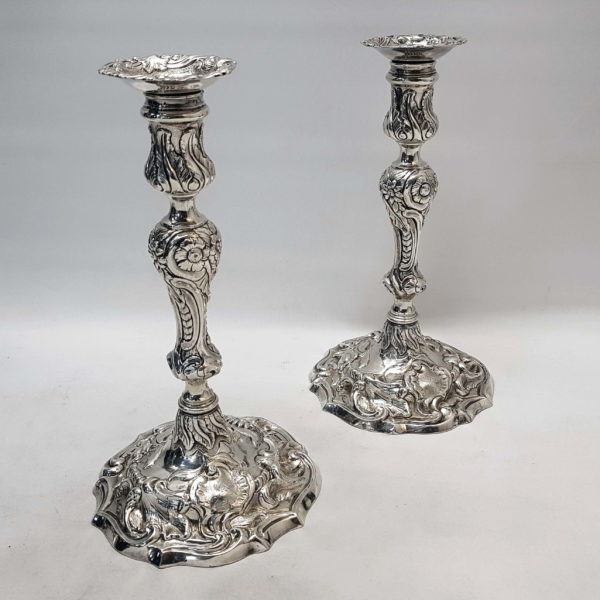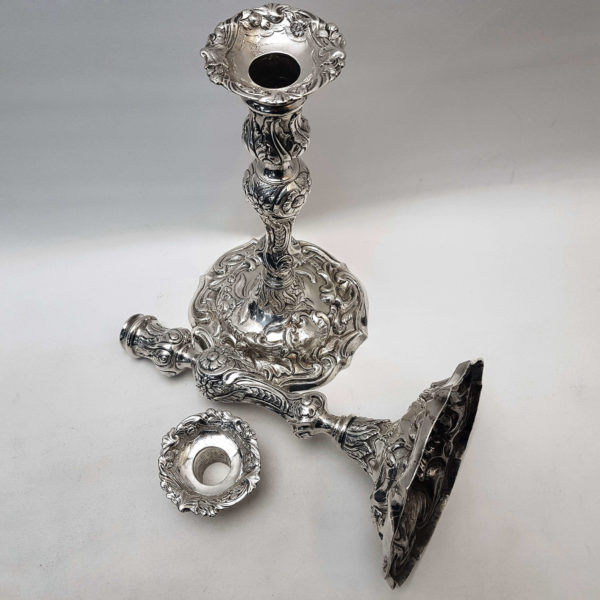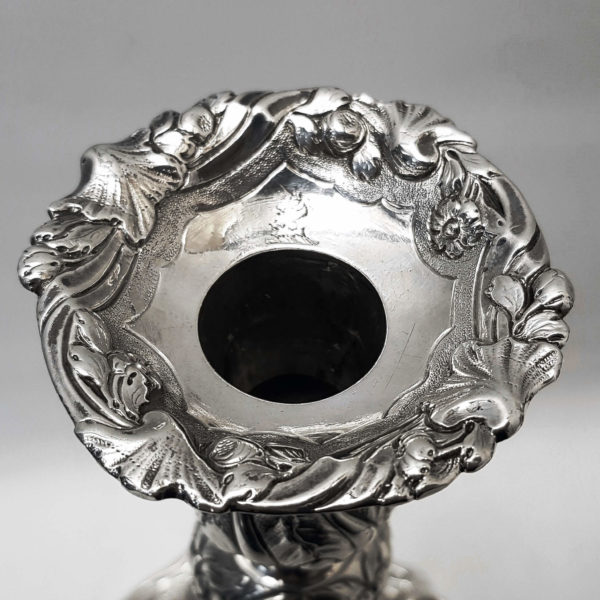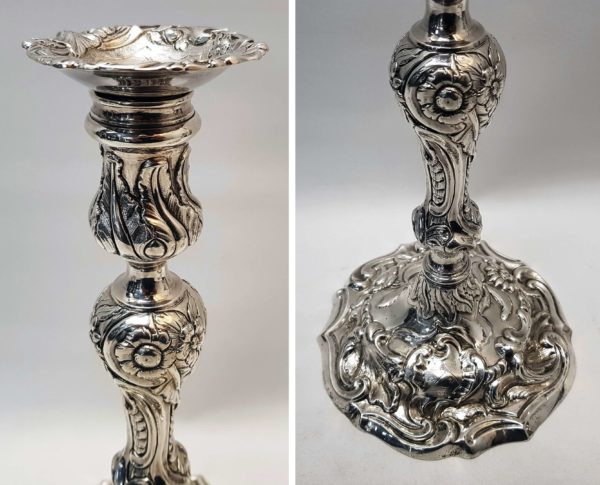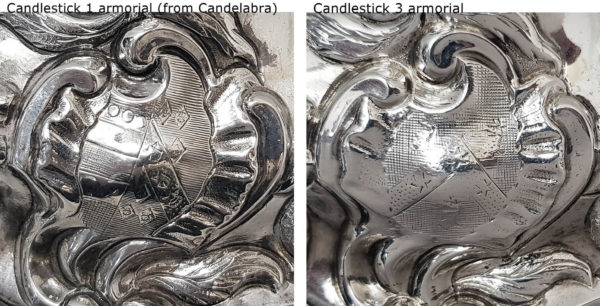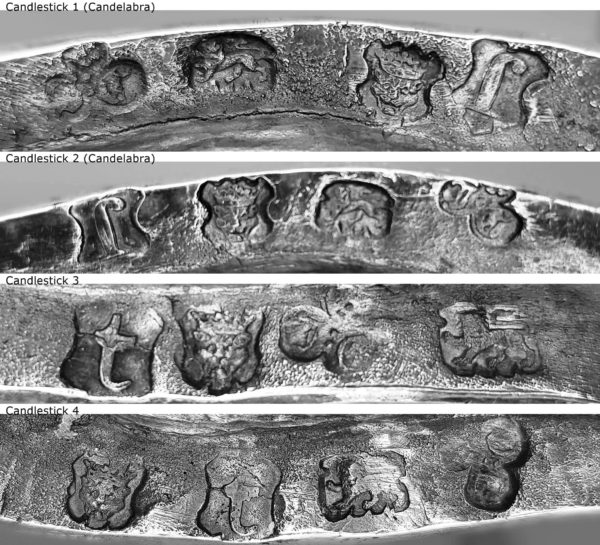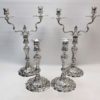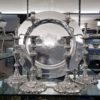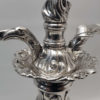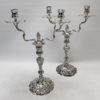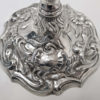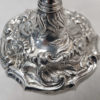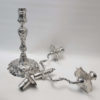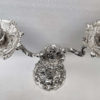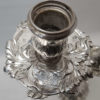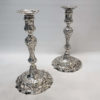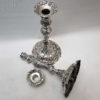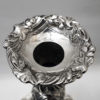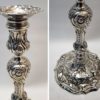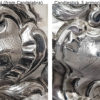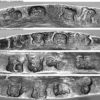George II Antique Silver Candelabra Set
£19,500
Stock: 10149
Date: 1754 - 1755
Maker: John Café
Country: England
Antique silver candelabra from this period are very rare and the additional pair of matching candlesticks add to the splendour...
Buy NowEnquireEnquire
×Description
Description
Antique silver candelabra from this period are very rare and the additional pair of matching candlesticks add to the splendour of this set. A fine set of two-light silver candelabras of naturalistic rococo design with removable branches, the candlesticks with large hand engraved armorials. The four candlesticks can be used on their own. All pieces are made of heavy cast silver.
Weight 4597 grams, 14 troy ounces.
Height 42.5cm (top of candelabra), 27.2cm (candlestick).
London 1754-55.
Maker John Café, specialist candlestick maker.
Sterling silver.
Marks.
The candlesticks and candelabras are stamped with English silver hallmarks for London 1754 and 1755. All by the same maker John Café.
- Candelabra branches. All drip pans have the maker, lion mark and engraved unicorn crest.
- Candelabra bottoms. The sticks are fully stamped underneath for London 1755, maker John Café. Detachable nozzles, stamped with the lion and maker’s mark, no crest.
- The sticks are fully stamped underneath for London 1756, maker John Café. Detachable nozzles with engraved unicorn crest.
Armorials. The candlestick bases have hand engraved armorials contained within a rococo cartouche. Candlestick 1 and 2 (candelabra bases) have the matching armorial shown on the left of the armorial image. Candlestick 3 and 4 have the matching armorial shown on the right of the armorial image.
Provenance. Purchased from EKT Koopman & Son Ltd 20/07/65.
Literature. Hardly any antique silver candelabra survive from before the mid-18th century. Most candelabra have a detachable upper section which allows the candlesticks to be used on their own. Available in many different combinations, the smallest candelabra have just 2 arms with 2 or 3 candle lights and the largest could have an impressive 8 branches with 9 lights.
In antique times candelabra use signified burning many candles at once, an expense justified only when a number of people met or when a large room had to be lighted. Nowadays candelabras are popularly used to create an intimate atmosphere at the dining table allowing friends and acquaintances to converse across the flickering lights.
Rococo, fashionable from about 1730 to 1770, was used primarily in furniture, silver and ceramics. The style takes its name from the French rocaille (pronounced ‘rock-eye’), which means the rock or broken shell motifs which often formed part of the design. Rococo design was developed by craftspeople and designers rather than architects which helps to explain the importance of hand-worked decoration. The natural flowing design is often not symmetrical – one half of the design does not match the other half. Curved forms, often resembling the letters S and C, are common.
Condition
This rare mid 18th century candelabra suite is all in very good condition. Excellent colour.
Maker Information
Maker: John Café
John Café, London silversmith, apprenticed to James Gould 1730, free 1740. 1st mark, largeworker, 1740. 2nd mark 1742. Took his brother William Cafe as apprentice 1742. Livery 1746. John died c.1757 and his apprentices Thomas Hannam and John Perry were turned over to William Cafe. Both William and John were known for their cast candlesticks.
Our Guarantee
Customer satisfaction is our primary concern
All silverware on our website is checked thoroughly prior to offering it for sale and every product listing contains a condition report and details of the silver hallmarks.
All items offered on our website include:
- Free Shipping Worldwide
- Tracked and Insured
- 14 day no quibble money back guarantee
- We are accredited members of LAPADA and conform to their strict professional standards
- We dispatch 1-3 days after receiving cleared payments
More detailed information about deliveries, returns and how to pay is available in the Help section at the bottom of this page.

